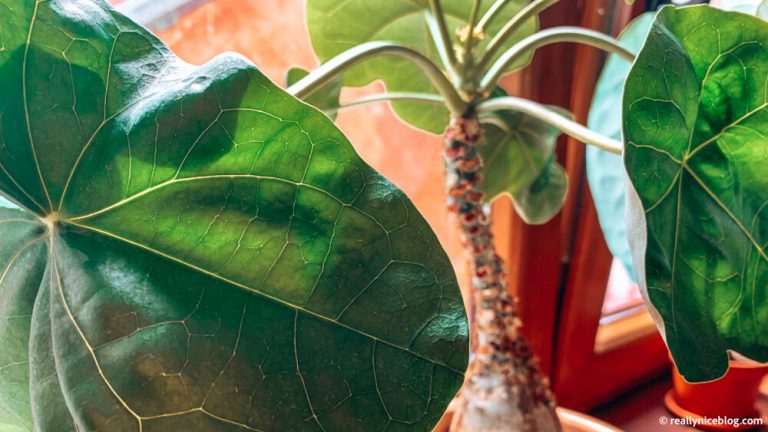Buddha belly plant (scientific name: Jatropha podagrica Hook) is a truly extraordinary succulent. This tropical plant features three unique elements: a bottle shaped, woody stem (caudex), lush green leaves and bright red flowers that look like precious coral. It can be grown both as an indoor plant and as an ornamental plant in the garden. Yet, compared to e.g. polka dot begonia (scientific name: Begonia maculata), Jatropha podagrica may rather appear on the underrated plants list. One of the reasons could be its toxicity – all parts of the Buddha belly plant are poisonous. Nevertheless, carefully handled Jatropha podagrica can be a very interesting addition to your houseplant and succulent collection. Time to meet the plant and learn how to take good care of it.
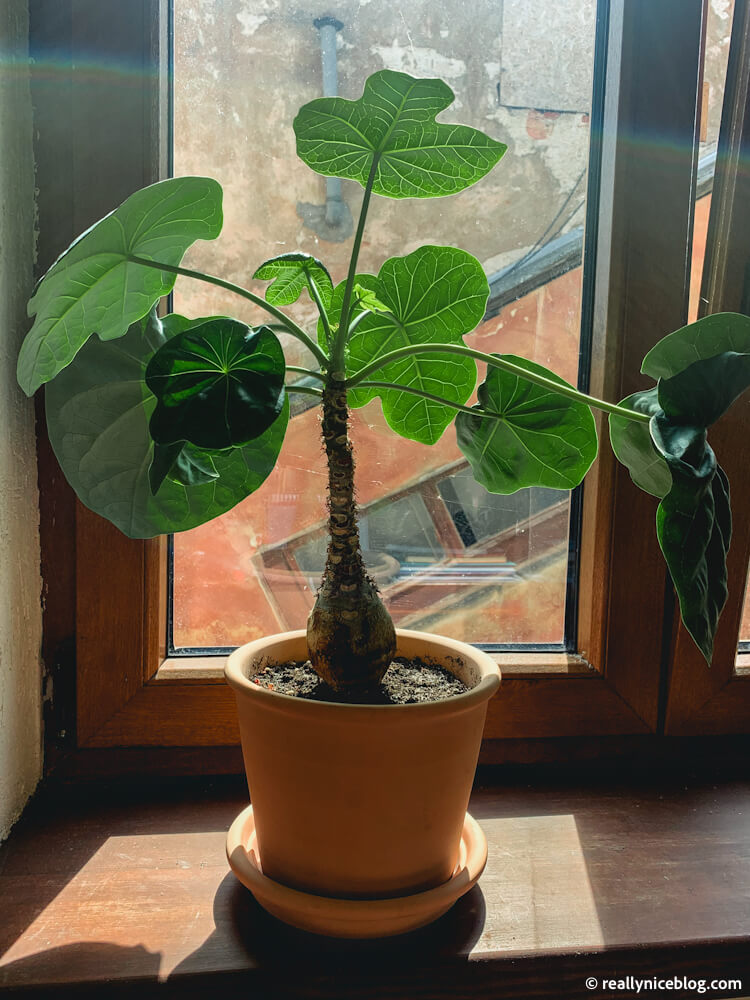
About the Plant
Buddha belly plant (scientific name: Jatropha podagrica Hook) is a succulent plant that originates from tropical Americas (Mexico, Honduras, Nicaragua, Guatemala). Other common names of this plant include Guatemala rhubarb, coral plant and Australian bottle plant, referring to the unique look of the plant.
It has a grey, bottle-shaped caudex with small, spiky knobs. Essentially, a caudex is a stem with a tree trunk look. New leaves and flowers grow on tall stalks from the top of caudex. The knobs show were the stalks of the leaves and flowers were attached to the caudex. Fig-shaped leaves of the plant are quite thin, lobed and can grow up to 8 to 9 inches (20 to 22 cm) in diameter indoors. Bright red flowers grow in clusters and look just like corals.
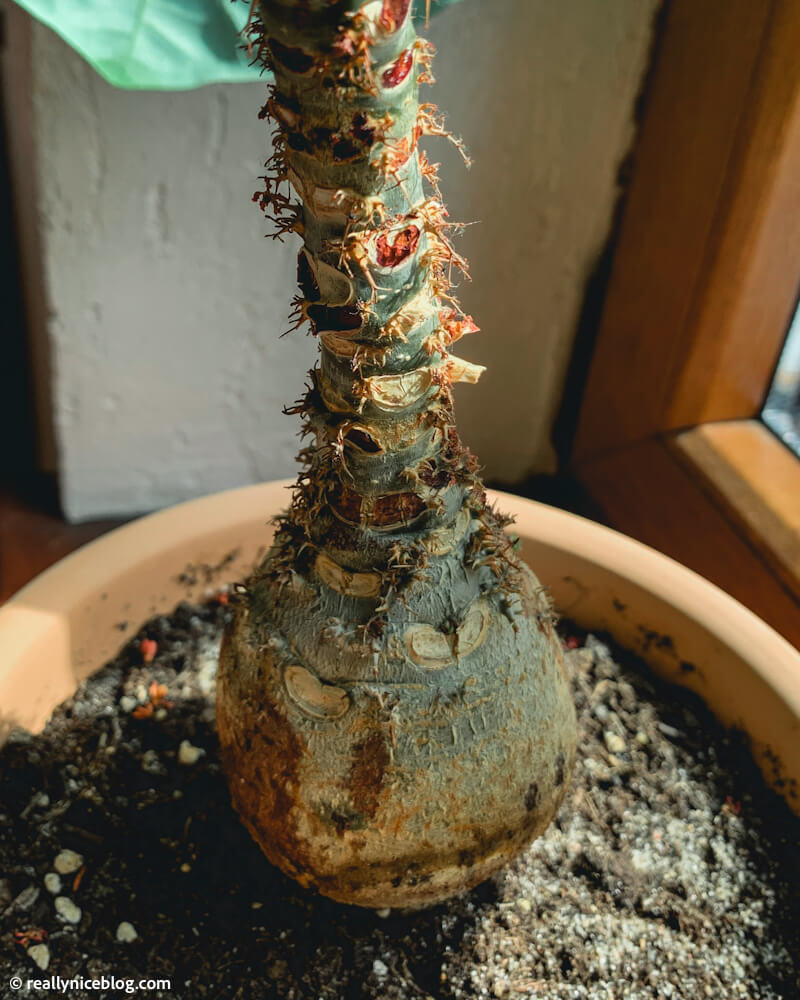
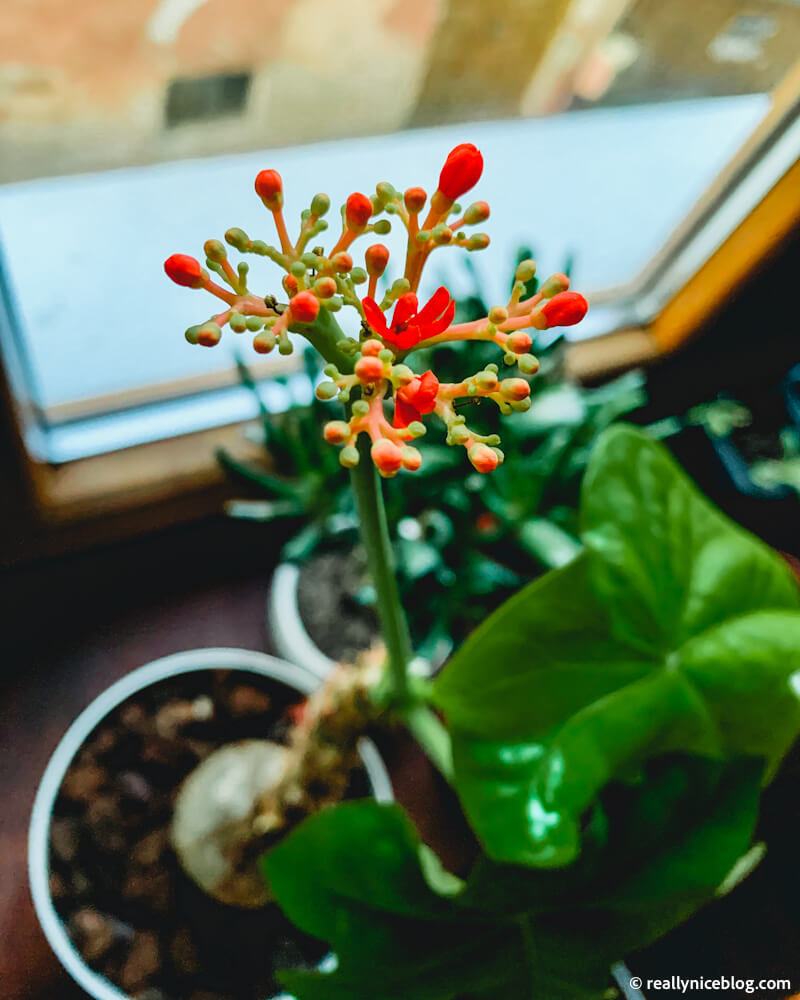
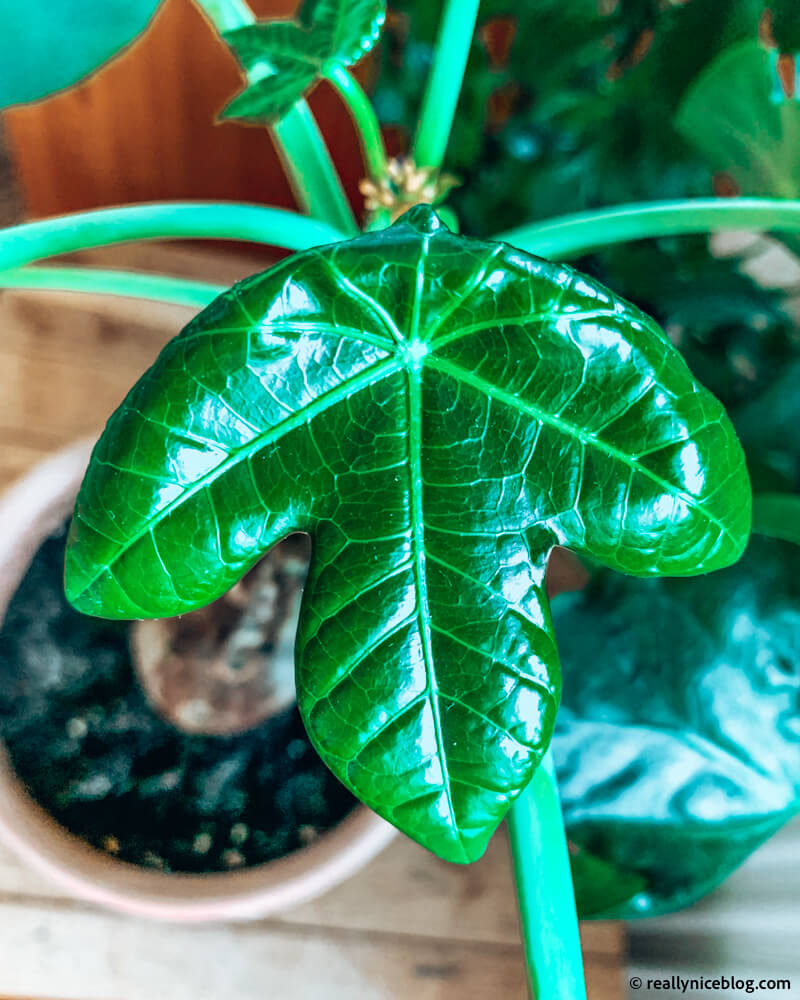
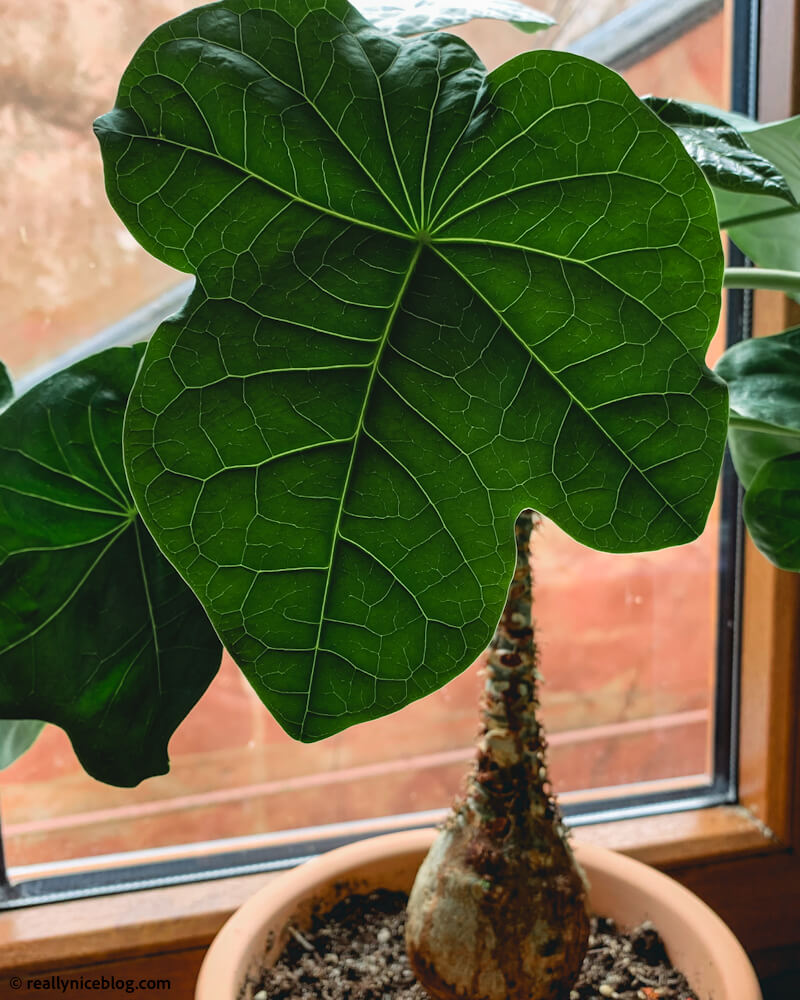
In cold season, Jatropha podagrica may shed its leaves and flowers completely. Even if you end up with only a caudex in the flower pot, there is probably no need to worry. Once the weather starts getting warmer, Buddha belly plant quickly regrows its foliage and flowers. So if you notice that the plant is waking up, it is a sign that spring is coming.
Considering the structure of the Buddha belly plant and how it changes the foliage based on seasonality, the plant will require more space in spring and summer. Keep this in mind when planning plant decor at home. By the way, smart positioning of Jatropha podagrica could result in a nice shade for smaller plants, just like under a sun umbrella.
How to Care for Buddha Belly Plant
Light
Buddha belly plant likes bright light, yet too much of direct light may damage the leaves. Try not to place it in shade and make sure the plant gets at least a few hours of sun per day. Fun fact: I changed my Jatropha podagrica‘s placement just a little bit and noticed this. If Buddha belly plant gets more sunlight in the morning, it develops a more lush foliage and the leaves grow really big.
Water
Since Buddha belly plant is a succulent, water it when the soil dries out. Usually, I water it once a week in spring and summer, and less frequent in cold season. It is recommended to keep the plant on the drier side to avoid the root rot. It can tolerate longer periods between waterings but the leaves begin to wilt, telling you to water your coral plant.
Soil
Choose a quality cactus and succulent soil mix. Make sure that the soil is well-draining and not too wet. Again, to avoid root rot. As the houseplant grows, transplant it to a bigger flower pot with new soil, full of nutrients.
Fertilizing
Fertilise Jatropha podagrica once a month in spring and summer – this is when the plant is actively growing. Use less fertiliser in cold season when the plant is resting.
Humidity
Buddha belly plant grows well in a normal room humidity. As a tropical plant, Jatropha podagrica likes moisture, therefore you should avoid placing it in a very dry-air areas.
Grooming
As Buddha belly plant grows taller, it may drop the bottom leaves. The leaves that are about to be dropped first becomes yellowish. Remove them carefully as the caudex will discharge sap, which is poisonous and may cause skin irritation (cannot confirm this from personal experience, though). In general, all parts of Jatropha podagrica are poisonous, therefore keep the plant in a safe distance from pets and kids.
Even though Buddha belly plant has large, flat leaves, in my experience they do not get covered by dust as easy as e.g. raindrop peperomia. Nevertheless, you should always try to keep your plant leaves clean. This helps them photosynthesise efficiently.
